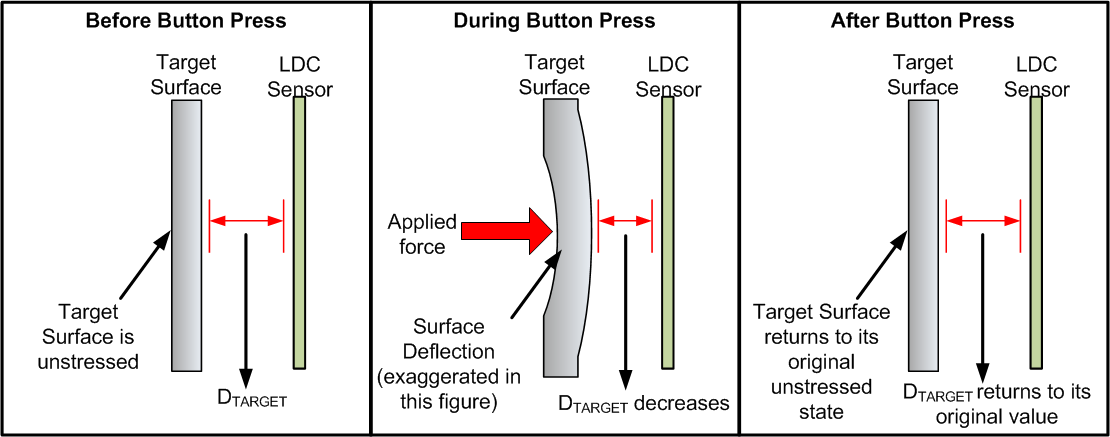-
Inductive Touch – Configuring LDC2114 and LDC3114 Touch-Button Sensitivity
Inductive Touch – Configuring LDC2114 and LDC3114 Touch-Button Sensitivity
Trademarks
All trademarks are the property of their respective owners.
1 Inductive Touch Buttons – The Working Principles
The three main components of the inductive touch button technology are the inductive sensor, target surface, and an inductance-to-digital converter. As shown in Figure 1-1 when a force is applied on the target surface, the material deflects slightly, reducing the distance between the inductive sensor and the target surface (DTARGET). This change in DTARGET changes the inductance of the sensor (Δ Sensor Inductance ∝ Δ DTARGET), which is measured by the inductance-to-digital converter. When the force is removed the surface returns to its original unstressed shape.
 Figure 1-1 Inductive Touch Components
Figure 1-1 Inductive Touch ComponentsThe primary factors that contribute to the sensitivity(1)of an inductive touch button are:
1.1 Target Distance (DTARGET) and Sensor Size
Inductive sensing relies on the interaction of EM fields generated by the inductive sensor and the eddy currents(2) being induced on the conductive surface. The amount of eddy currents induced on the target surface decreases with an increase in DTARGET as the target conductive surface now captures a smaller portion of the electromagnetic field generated by the inductive sensor. In turn, the physical size of electromagnetic field lines generated by an inductive sensing coil is directly proportional to the diameter of the sensor. Figure 1-2 shows how to set DTARGET as a percentage of the coil diameter for inductive touch.
 Figure 1-2 Button Sensitivity as a Function of DTARGET
Figure 1-2 Button Sensitivity as a Function of DTARGET